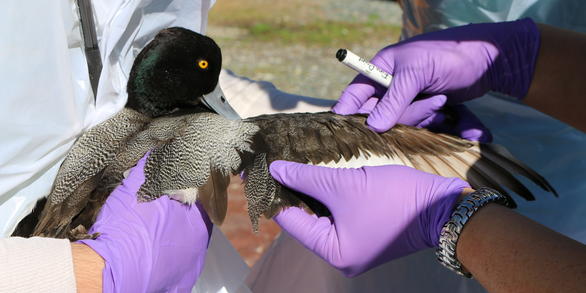Biosurveillance
Our early detection & rapid response are improving biological threat detection
Fish and Wildlife Disease
We are the lead Federal agency for wildlife disease research and surveillance
Biological Threats and Invasive Species Research Program
The Biological Threats Research Program delivers science to protect public safety, property, and ecosystems from invasive plants and animals and infectious fish and wildlife diseases that pose significant ecologic and economic threats to the resources of the United States.
Links to Cool USGS Web Tools
Explore powerful tools that provide immediate access to data and information on aquatic invasive species, wildlife diseases, and invasive plants.
News
Pathology Case of the Month - Mountainous Star Coral
USGS Friday's Findings - July 12, 2024
USGS Friday's Findings - June 28, 2024
Publications
Realizing the potential of eDNA biodiversity monitoring tools in the marine environment with application to offshore renewable energy
The U.S. Geological Survey (USGS) researches the biological diversity and distribution of species to support management, conservation, and resource use decisions. USGS scientists advance detection and monitoring technologies to assess changes in fish and wildlife populations, biodiversity, and the health of ecosystems. The United States is planning to install 30 gigawatts of offshore marine and wi





